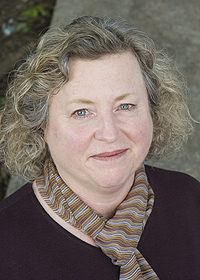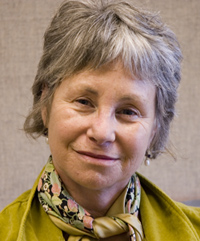Berkeleyan
From a confusing smorgasbord to one-stop shopping
bSpace, Berkeley's new collaboration and learning environment, provides tools for a variety of campus users
![]()
| 03 May 2006
In the past, faculty members who wanted to offer their students a course website had a confusing array of options: Blackboard, WebCT, and, most recently, bSpace. Over the past two years Educational Technology Services (ETS) has been working to simplify that menu. Its efforts to provide a single, flexible, and robust enterprise system have entailed integrating the campus's course websites into Berkeley's systems, including the registrar's database, the human-resources database (HRMS), the campus authentication system (CalNet), and the campus directory.
ETS previewed bSpace last fall with a limited number of faculty members; by fall 2007 it will be the only collaborative and learning environment (CLE) that ETS supports. "bSpace represents a quantum leap forward from Blackboard and WebCT," says Christina Maslach, vice provost for undergraduate education and instructional technology, who oversees ETS. "In bSpace, faculty and students will find a rich, full-service teaching and learning environment that will streamline administrative tasks, allow sharing of all types of course materials, and promote dialogue and collaborative engagement. bSpace is not just limited to instructors and students in courses. It can support scholarly research, student groups, staff projects - any campus effort that involves collaboration across multiple individuals and units."
 Melinda Erickson (Wendy Edelstein photo) |
WebCT will be phased out by next fall, though Blackboard will remain available until fall 2007. Both WebCT and Blackboard are proprietary tools for which the university must pay an annual license while enjoying limited input into their functionality. bSpace has the advantage of being "community source" - an open-source product built by the Sakai Foundation (www.sakaiproject.org), an international consortium of universities, colleges, and private companies in which Berkeley has been a key partner. "Choosing Sakai allows ETS to prioritize modifications to the system, adding functionality based on the needs of Berkeley's faculty, students, and staff," says Karen Miles, manager of ETS's training and support group. bSpace can also take advantage of a wide variety of learning and collaboration tools generated by the larger Sakai community, such as a wiki tool from Cambridge University or a new discussion-forum feature from Foothill College.
Techno-neophyte turns early adopter
Though Melinda Erickson had used Blackboard for two semesters, she describes herself as less experienced with technology than some faculty members. Erickson, a lecturer in College Writing Programs, signed up for the bSpace pilot program because she sensed the technology could help her enhance the course.
 Lisa Rubens (Wendy Edelstein photo) |
Erickson selects a theme for the course each semester she teaches it. Last semester that theme was "music in our lives," in support of which bSpace enabled her to post MP3 audio files to the course website. ETS staff have helped out along the way, she says: "There are certainly problems that I've had that I couldn't solve on my own. I've appreciated the ease with which I've been able to get answers."
More classroom kudos
This semester, Lisa Rubens, a historian and editor in the Regional Oral History Office, is teaching a new course, Changing History: Women at Berkeley. Rubens, who had never used a course website before, hasn't had any difficulty working with bSpace. "I think it's terrific," she says. "It's been a very convenient mode of interacting with the students and keeping the course up to date."
Rubens opted to use bSpace because she suspected it would allow her a level of flexibility that's helpful in a new course. "I knew the syllabus would change and that I'd be adding materials as we went along," says Rubens, who has periodically updated the syllabus online.
 Richard Rhodes (Wendy Edelstein photo) |
In the class, Rubens' 19 students break into project teams to select and research women who attended Berkeley, whose experiences here proved formative, or who work on campus. "A lot of communication needs to take place between the students," explains Rubens. "We met very systematically for half a semester, but now we've broken into work groups; I need to communicate with the students, and they need to communicate with their team members."
Richard Rhodes, associate professor of linguistics, also appreciates the ease with which it's possible to contact his students using bSpace. "I used to repeatedly download the class list from BearFacts to do mass e-mails, since students come and go in the first five weeks of class." Because bSpace is linked to the registrar's database and the campus directory, enrollment information and student e-mails are automatically updated on its course websites. That innovation is a welcome change for Rhodes, who says bSpace has "knocked hours off my class management."
Ch-ch-ch-changes
Instructors who wish to create a course website for the fall need only log into bSpace (bspace.berkeley.edu) with their CalNet ID and passphrase to begin the process. To help faculty make the switch to bSpace, ETS will be offering workshops over the summer and fall. In addition, an extensive FAQ in the training section of the bSpace portal shows how to accomplish basic tasks using step-by-step illustrated instruction. Individual consultations for faculty and GSIs are also available; those interested should fill out a request form on the Educational Technology Services website (ets.berkeley.edu).
ETS's Miles acknowledges that making the switch from other CLEs has resulted in some faculty changing the way they approach the design of their course website, because bSpace's tools are different from those in Blackboard and WebCT. "Hopefully," she says, "with our workshops, consultations, and training materials, we have a support system in place to make the change as smooth as possible."

